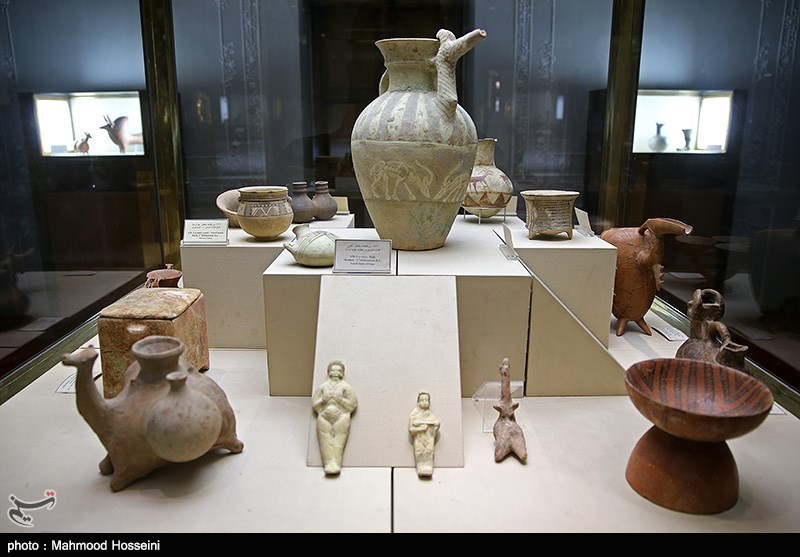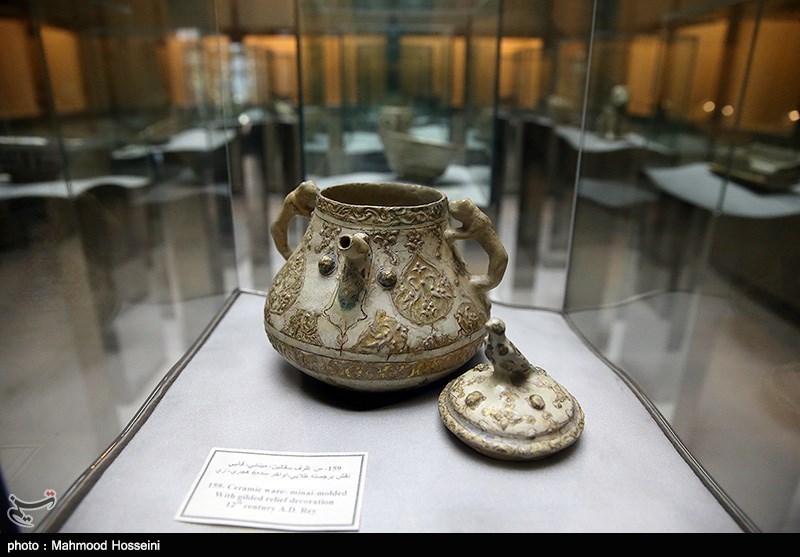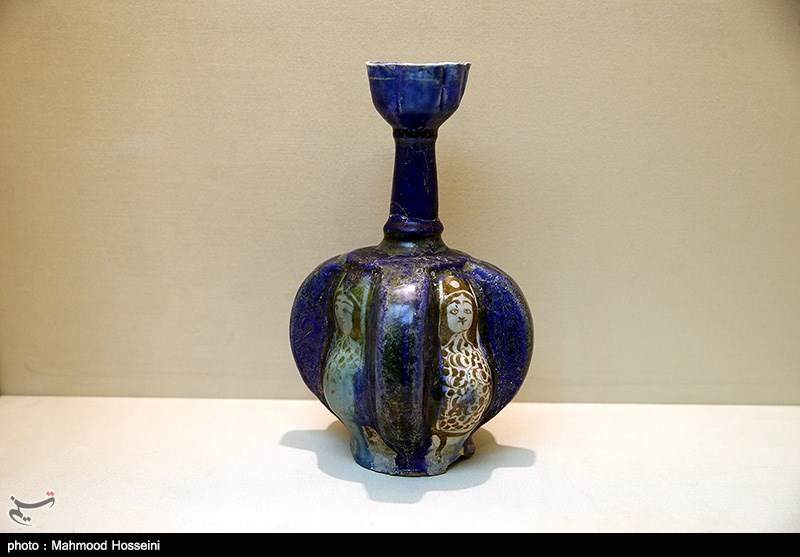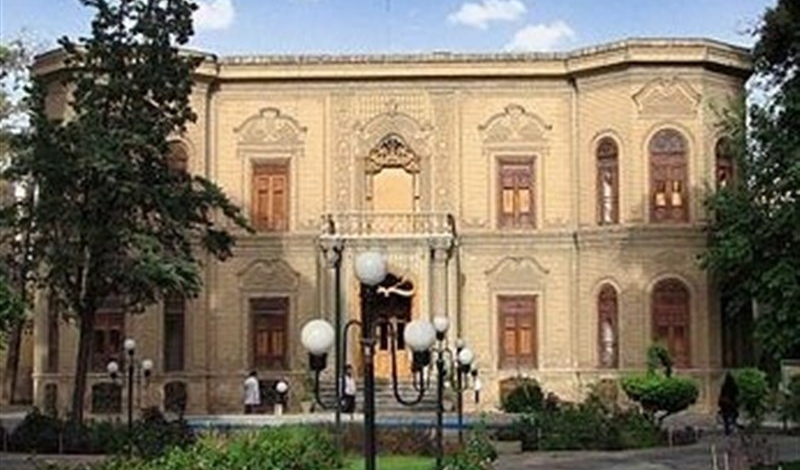The museum�s building is octagonal, in a garden 7000 square meters large. The building of the museum itself is intriguing for the enthusiasts. This building used to belong to Ghavam-Alsaltaneh, the Vizier of Ahmad Shah from Ghajarid Dynasty.
This building has two floors and five halls. The first and second halls are on the first floor, and the other ones are on other floors upstairs. In the second hall (crystals) the oldest glasses, glass pipes and clay pots are located. The designer of the display windows of the museum was an Austrian engineer called Hans Holiehn. The ornaments of the building include wood embossing of the door frames and stairways and the fa�ade of the building with 50 different types of brick.


The plaster work belongs to two periods: the period FO Ghavam-Alsantaneh himself and the western period when it was the embassy of Egypt, and the mirror work upstairs which belongs to the Ghajarid era. The mirror museum is in fact a professional museum of glass and pottery work. The oldest glasses are glass pipes, called glass cylinders which have been discovered in Ghoghazanbil Temple and belong to two thousand years before Christ. The glass and clay pots on the first floor are also prehistoric and the oldest hand-made pot from Ashkanid, the first thousand years is also there.

The Shell Hall which is called so because it looks like a half-open shell contains all sorts of pots from the third and fourth century, Neyshabur. The fourth hall (the golden) which is called so because of golden dishes from the Seljuk era contains pots whose rims are garnished with Naskh and Nastaligh Calligraphy writings. Mongolian faces also attract attention on these dishes which are of different types depending on which town they have been found in. the fifth hall (azure) is called so because of the light blue color of turquoise and belongs to the seventh and eighth century of Ilkhani era.



Approaching the Safavid era, things get more suitable for daily use. The decorations in this part include rose perfume (Golab) sprinklers and decanters. Also a table belonging to the Ghajarid era is glazed in seven colors and decorated with faces of Shahnameh characters with their names above.
The museum has a library with 4000 Persian and English books in archeology, history and art.














